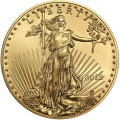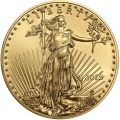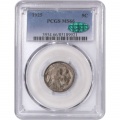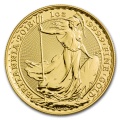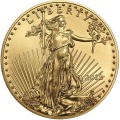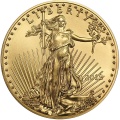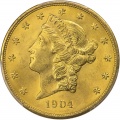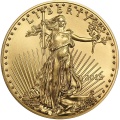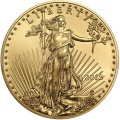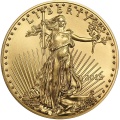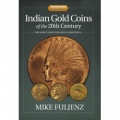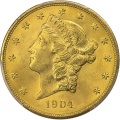November 2022 - Week 4 Edition
A Bonanza Month for Gold and Silver
Many prices are coming down, gold included. but gold has only fallen because the U.S. dollar has recovered a bit (+1.5%) from November 16 to November 21. Gold has fallen about the same amount (down $25), in the same five days, and crude oil prices fell below $80 for only the second time this year.
Besides lower gasoline prices and lower food prices in the last month, one more thing to be thankful for going into the Thanksgiving break is that November has been a great month for the precious metals so far. On Thursday, November 3 (in London), gold closed at $1628.75 and silver at $18.92. In less than three weeks, gold is up $111 (+6.8%) to $1,740, and silver is up $1.96 (+10.4%) to $20.88, a bonanza month.
The History Surrounding Thanksgiving Day & Sarah Hale May be Different than You Think
As we celebrate Thanksgiving with our friends and family this week, I wanted to share a couple of stories of how the traditional holiday began more from fable than fact as Pilgrims didn’t wear big hats and clunky shoes.
Still, it was Myles Standish who invited the Indian leader, at the time, to a feast in October 1621 that would later become known as Thanksgiving. Luckily, for the Pilgrims, the Indians brought most of the food because the colonists weren’t exactly the best at farming the new land of America and they tended to drink a lot of beer, so they stayed relatively intoxicated most days. Their ongoing relationship with the Indians was a tenuous one fraught with violence but in that first feast, both sides came together in peace.
The next major push in Thanksgiving lore came from a highly-determined young woman named Sarah Josepha Hale, who at the age of 18 years old, started her own private school for teaching children – something women did not do in the early 1800s. When her husband died, leaving her with five children at the age of 34, she opened another business and went back to writing – something that her late-husband had encouraged before his death and led to many of her short stories being published in local newspapers.
Hale used the money from her writing to care for herself and her children and she published a book of poetry that included the children’s nursery rhyme, “Mary Had A Little Lamb.” Her writing brought her much fame and she became the first female editor of Ladies’ Magazine. During her tenure, she would constantly write to local, state and national leaders including presidents asking that a day – the final Thursday in November – be established as a holiday to, “offer to God our tribute of joy and gratitude for the blessings of the year.”
It wasn’t until Hale wrote to President Abraham Lincoln and published her plea in a newspaper editorial that he declared on October 3, 1863, that “Thanksgiving” would be celebrated as a federal holiday on the final Thursday of November as Hale had persistently promoted for years.
On a numismatic note, the U.S. Mint created a commemorative silver half-dollar coin featuring the image of a Pilgrim in 1920 and 1921. The coin, struck to recognize the 300th anniversary of the landing of the Pilgrims in Plymouth, Mass., better known as Plymouth Rock, depicts William Bradford, the second governor of Plymouth Colony, holding what is believed to be a Bible in his left arm on the obverse. The reverse is emblazoned with the image of the Mayflower sailing across the rough Atlantic Ocean.
The Tercentenary Commission could only get Congressional approval for 300,000 coins (200,000 in 1920 and 100,000 in 1921) despite requesting an original half-million mintage. That was still a large number of coins but they were not as popular as anticipated and 48,000 coins from the original mintage were melted down and reminted with a 1921 date in the left-hand area of the field of the obverse.
The second-year mintage was cut to 80,000 but only 20,000 or so, were sold and 60,000 of those coins were melted down, as well. The total distribution for the Pilgrim Commemorative was 152,112 in 1920 and 20,053 in 1921.
And those are the facts of Thanksgiving. We owe it to the Pilgrims, the Indians, to Sarah Hale and President Lincoln for helping create a day where we can all take a moment to reflect on the things that we are thankful for in our lives.
The Denver Mint Will Put History in Your Hands
Coins. People earn them, spend them and collect them every day and despite many banks and businesses falsely claiming there was, and in some cases, still is a “coin shortage” that was never a thing. The truth is there was a circulation issue because people weren’t spending coins in vending machines, car washes or toll booths and banks and businesses were closed due to the 2020 pandemic.
However, despite the claims, the U.S. Mint produced 3.9 billion, or 24 percent, more coins across its four branches – Philadelphia, West Point, San Francisco and Denver – in 2020 than it did in 2019, just to stem the lack of coin circulation. So, what were the numbers? In 2020, the U.S. Mint struck 14.8 billion coins compared to 11.9 billion in 2019, proof that not having enough coins was never an issue.
“During this pandemic, the demand for circulating coins has drastically increased, in part, because precautions taken throughout the nation to slow the spread of the virus have reduced retail sales activity and significantly decreased deposits from third-party coin processors,” Michael White of the U.S. Mint’s Office of Corporate Communications told me in 2020.
Now, if you’re wondering which Mint location struck the most coins, if you said Philadelphia, you’d be wrong. Although the Philadelphia Mint can strike as many as 47,250 coins per minute if all of its 63 coin presses are online, the Denver Mint outpaced Philadelphia in 2020 by just over 600 million coins and that trend continues today, according to the U.S. Department of Treasury. In 2021, the Denver Mint struck 7.4 billion coins to the Philadelphia Mint’s 7 billion coins and, so far, in 2022, the Denver Mint is on pace to hold the title, again, with 4.4 billion to 4.2 billion for the Philadelphia Mint. In fact, the Denver Mint has been recognized as the single largest producer of coins in the world.
The Denver Mint was originally a United States Assay Office established by an act of Congress in 1862. It processed gold from the Pike’s Peak Gold Rush in the mid-1800s but didn’t strike a single gold coin for more than 40 years. It wasn’t until early 1906 that the first gold and silver coins were struck at the Denver Mint. During that 11-month period from February through December, there were 167 million gold and silver coins struck in a variety of denominations.
Although the Denver Mint has a history of striking millions of gold and silver coins, today about 70 percent of the production of the coins is in the form of pennies. The rest consists of nickels, dimes, quarters, half dollars, dollars and commemorative coins. But don’t worry, the Denver Mint has abandoned its ties to the world’s favorite precious metal. According to the Department of Treasury, there are over $100 billion dollars in gold bars stored at the Denver Mint.
Set in downtown Denver, Co. at 320 W. Colfax Avenue, the U.S. Mint’s Denver location is one of only two locations that can be toured by the general public. The other is the Philadelphia Mint. The Denver Mint offers a 45-minute tour of the facility Monday to Thursday from 8 a.m. to 2 p.m.
During the tour, which is ranked 4.0 out of 5.0 on TripAdvisor, guests could get an up-close and personal look at how coins are made. Utilizing expert guides familiar with every aspect of the mint, the tour features historical elements, as well as, having the chance to see pennies, nickels, dimes, quarters or other denominations of coins streaming down the coin chutes on the minting floor. Applying for the tour is done via email (DenverMintTours@usmint.treas.gov) after downloading a tour request form on the U.S. Mint website.
The tours are free and when it’s over everyone gets a free newly minted penny featuring the D mint mark and a penny blank. There are some criteria about no cell cameras, purses backpacks, handbags, food or drinks but if you can leave those things behind, then you are in for a treat, especially if you go on a day when they are striking coins.
Important Disclosure Notification: All statements, opinions, pricing, and ideas herein are believed to be reliable, truthful and accurate to the best of the Publisher's knowledge at this time. They are not guaranteed in any way by anybody and are subject to change over time. The Publisher disclaims and is not liable for any claims or losses which may be incurred by third parties while relying on information published herein. Individuals should not look at this publication as giving finance or investment advice or information for their individual suitability. All readers are advised to independently verify all representations made herein or by its representatives for your individual suitability before making your investment or collecting decisions. Arbitration: This company strives to handle customer complaint issues directly with customer in an expeditious manner. In the event an amicable resolution cannot be reached, you agree to accept binding arbitration. Any dispute, controversy, claim or disagreement arising out of or relating to transactions between you and this company shall be resolved by binding arbitration pursuant to the Federal Arbitration Act and conducted in Beaumont, Jefferson County, Texas. It is understood that the parties waive any right to a jury trial. Judgment upon the award rendered by the Arbitrator may be entered in any court having jurisdiction thereof. Reproduction or quotation of this newsletter is prohibited without written permission of the Publisher.

